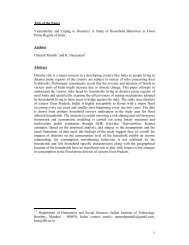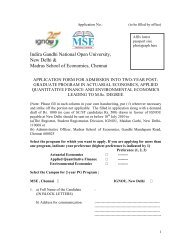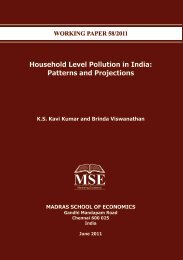Accounting for India's Forest Wealth - Madras School of Economics
Accounting for India's Forest Wealth - Madras School of Economics
Accounting for India's Forest Wealth - Madras School of Economics
- No tags were found...
You also want an ePaper? Increase the reach of your titles
YUMPU automatically turns print PDFs into web optimized ePapers that Google loves.
tobacco products. Following the consumption expenditure method sheobserves that the rate <strong>of</strong> GST required <strong>for</strong> revenue neutrality would be20 percent. With improved tax administration, the GST rate can bereduced further.The Task Force <strong>of</strong> the Thirteenth Finance Commission hasestimated with reference to a comprehensive tax base (as discussed inthis chapter) a revenue neutral rate <strong>of</strong> 12 percent, with 5 percent <strong>for</strong> thecentre, and 7 percent <strong>for</strong> the states.Overtime the relative share <strong>of</strong> the GST components <strong>for</strong> thecentre and the states have been changing marginally away from thecentre due to the erosion <strong>of</strong> buoyancy <strong>of</strong> Union excise duties (seeAppendix Table A2).The Task Force has recommended a single positive rate, each <strong>for</strong>CGST and SGST on all goods and services. In addition, there should be azero rate applicable to all goods and services exported out <strong>of</strong> the country.The Task Force favours a single rate structure GST and someinternational experience with VAT in support. States have said that asingle rate <strong>of</strong> State GST <strong>for</strong> all goods and services will be highlyregressive in India with its large low income population. It is mainly thearticles <strong>of</strong> common consumption which are in the lower rate bands <strong>of</strong>VAT. The single revenue-neutral rate will definitely be much higher thanthe rate now prevailing at the lower bands. To deal with problem, theTask Force suggests a moderate threshold exemption level <strong>for</strong>registration <strong>of</strong> dealers. Consequently, all small dealers would remainoutside the purview <strong>of</strong> the GST. The Task Force Report argues that thetax incidence on products sold through such dealers would be relativelylower. Since the poorer section <strong>of</strong> the society tend to make theirpurchases from such small and unregistered dealers, the consumption <strong>of</strong>any commodity by the poor would bear a relatively lower incidence <strong>of</strong> tax24



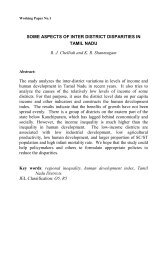

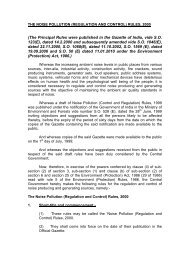
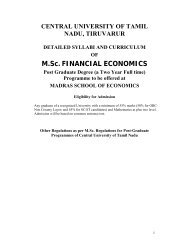
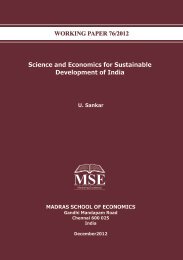
![Curriculum Vitae [pdf] - Madras School of Economics](https://img.yumpu.com/49878970/1/190x245/curriculum-vitae-pdf-madras-school-of-economics.jpg?quality=85)
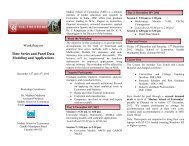
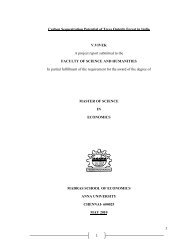
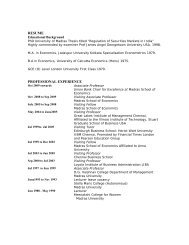
![Curriculum Vitae [pdf] - Madras School of Economics](https://img.yumpu.com/48715201/1/184x260/curriculum-vitae-pdf-madras-school-of-economics.jpg?quality=85)
